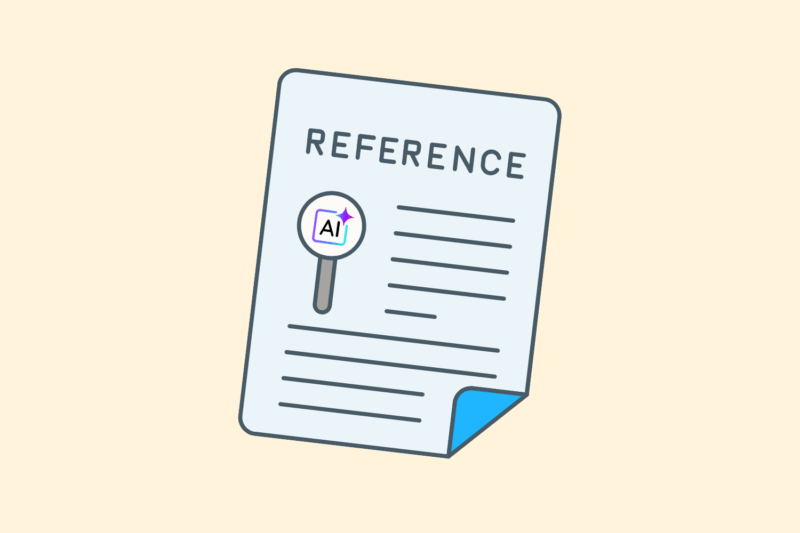Writing for citation windows: how AI takes over your content

Since the rise of AI-driven search engines such as ChatGPT, Gemini and Perplexity, content is being read, interpreted and shared differently. One of the main shifts I see is the phenomenon of so-called citation windows.
Citation windows are moments when an AI system explicitly or implicitly refers to the source of its response.
Understanding how this works helps me write content that gets picked up better, and actually shows up in generated responses.
Citation windows are text blocks in which a language model such as ChatGPT-4o, Claude or Gemini summarizes or cites content from Web sites, sometimes with source citation. Sometimes this is through a clickable link, sometimes just as a reference without a clear URL. In either case, the underlying content comes from sources that the model considers reliable and relevant.
Why citation windows matter
AI doesn’t necessarily need to show the full text of your page to impact the visibility of your brand or message. In a world where users get an instant summary, it’s crucial that your content is selected for inclusion in that response.
When I write content with this mechanism in mind, I focus not only on ranking in Google, but on “usability for AI. Because only then will that content show up, literally and figuratively. Citation windows are thus the new equivalent of a featured snippet, but more broadly applicable within any AI system.
What AI looks for in actionable content
The content that a language model cites often meets a number of recognizable characteristics. Based on what I see in practice, these appear to be the most important criteria: (When combined with tools such as Perplexity and Poe)
- Clear structure with well named intermediate headings (H2 and H3)
- One topic per paragraph, clearly explained
- Content depth without over-optimization
- A professional, factual tone-of-voice
- Indication of author, date and source of information
If I want AI systems to use my content, I make sure these criteria are always present. Not just because it looks uncluttered, but because it helps the model selection process. (1)
Getting started with SEO? Feel free to get in touch.

Writing with reformulation in mind
What many people forget: AI generates answers based on rephrasing. That means your sentences don’t have to come back verbatim. The gist needs to be clear and communicable, in natural language. That’s why I avoid jargon, use logical paragraphs, and write as if I’m explaining the topic to someone with whom I’m having a conversation.
A good test I apply: suppose an AI summarizes one paragraph of this page, does it contain all the core information about the topic? If not, I rewrite it. That micro-test ensures that the content I provide is block-by-block suitable as input to a language model.
The role of source citation in different systems
Not every system treats citation windows the same. These are the differences I observe:
- ChatGPT with browse function: sometimes shows sources, but often only after you have clicked ‘cite source’.
- Google’s Gemini: tends toward direct links under AI-generated text, favoring pages from their index.
- Perplexity: shows the most explicit citation windows, with full link entries and snippets from the source text.
- Claude of Anthropic: cites mostly in research context or on demand, without standard citation.
These differences help determine how I write. In content that I specifically target Perplexity, for example, I make sure to have a strong first sentence of each paragraph. After all, that is often the text that will appear in the citation window. (2)
What I apply myself
When I write content to be considered for AI processing, I apply the following:
- Clear, concise titles by section
- Paragraphs of up to 100 words with one clear point
- Sources and references named where possible, with date or origin
- Use of entities (people, brands, concepts) that an AI can recognize
- Regular updates so that content remains current for systems that live crawl
This approach ensures that content not only ranks well in organic search results, but is also selected in citation windows of AI systems.
Summary
Citation windows are the new playing field of online visibility. Those who appear in them are visible in the answer itself, not just in the source behind it. By writing content that is logically, clearly and reliably structured, I increase the chances that the information will actually be adopted by AI.
It requires a different way of thinking than classic SEO. But that is precisely where the opportunities lie for those who adapt. By understanding how citation windows work and applying them when writing content, I improve my visibility.
| # | Source | Publication | Retrieved | Source last verified | Source URL |
|---|---|---|---|---|---|
| 1 | 6 guiding principles to leverage AI for SEO content production (Search Engine Land) | 30/05/2024 | 30/05/2024 | 02/11/2025 | https://searchengineland.. |
| 2 | New Study: AI Assistants Prefer to Cite “Fresher” Content (17 Million Citations Analyzed) (SEO Blog By Ahrefs) | 29/06/2025 | 29/06/2025 | 02/11/2025 | https://ahrefs.com/blog/.. |
- Nikki Lam. (30/05/2024). 6 guiding principles to leverage AI for SEO content production. Search Engine Land. Retrieved 30/05/2024, from https://searchengineland.com/ai-seo-content-production-guiding-principles-442684
- Law, R. (29/06/2025). New Study: AI Assistants Prefer to Cite “Fresher” Content (17 Million Citations Analyzed). SEO Blog By Ahrefs. Retrieved 29/06/2025, from https://ahrefs.com/blog/do-ai-assistants-prefer-to-cite-fresh-content/






